Ecology
The habitat and the territory
The Iberian lynx is a very selective species when choosing a habitat. It prefers areas of the Mediterranean forest with refuge (large bush areas and/or rocks) and at least one rabbit per hectare.
The Iberian lynx avoids open spaces. However, during dispersive movements, this may take place in areas with any type of vegetation, such as groves, the woods and grasslands.
The females territories is the foundation of the population dynamics of this feline. Males maintain individual territories, which they defend against same-sex felines, and occupy the territories of several females. Males establish larger areas, between 4 and 15 km2, and females establish smaller territories, some under 5 km2.
The wild rabbit represents between 80 and 100% of the food eaten by the Iberian lynx, depending on the geographical area or seasons of the year.
The energetic needs of an adult lynx are between 600 and 1000 kcal, which are roughly the energy contained in an adult wild rabbit. A female with two kittens will need to hunt about three rabbits a day. The minimum density of wild rabbits in the territory that will allow for lynx reproduction is estimated to be about four wild rabbits per hectare.
Other vertebrates such as rodents, hares, quails and birds may also be prey to the Iberian lynx, yet in significantly lower percentages.
Lynx, a super predator
The Iberian lynx can coexist with other wild carnivores, but does not abide by them in their territories, and may even kill carnivores such as foxes, mongooses, wildcats or genets. Although the Iberian lynx does not feed on other predators, expel them from their territories.
Rewarding Predation
Scientific studies conducted in the 1990s showed that the presence of the Iberian lynx in a given area favours wild rabbit populations, as it controls the density of other predators such as the fox and the mongoose, capturing them or keeping them away from their territory.










